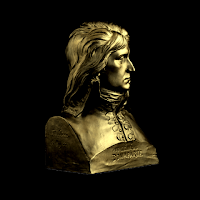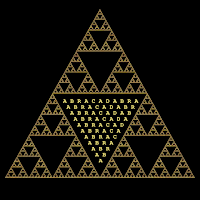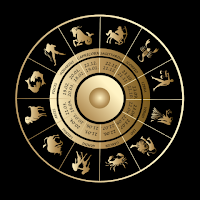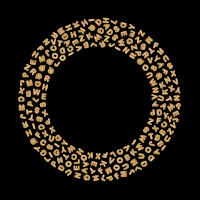The associations of the names and the fact that pseudo-literature forms so large a part of the early literature of alchemy suggest its close connection at that time with magic.
Whereas Vitruvius, although
not personally inhospitable to occult theory, showed us the art of architecture
free from magic, and Hero told how to perform apparent magic by means of
mechanical devices and deceits, the Greek alchemists display entire faith in
magic procedure with which their art is indissolubly intermingled.
Indeed the papyri in which
works of alchemy occur are primarily magic papyri, so that alchemy may be said
to spring from the brow of magic.
The same is only somewhat
less true of the manuscripts.
In the earliest one of the
eleventh century the alchemy is in the company of a treatise on the
interpretation of dreams, a sphere of divination of life or death, and magic
alphabets.
The treatises of alchemy
themselves are equally impregnated with magic detail.
Cleopatra’s art of making
gold employs concentric circles, a serpent, an eight-rayed star, and other
magic figures.
Physica et mystica, ascribed
to Democritus, after a purely technical fragment on purple dye, invokes his
master Ostanes from Hades, and then plunges into alchemical recipes.
There are also frequent bits
of astrology and suggestions of Gnostic influence.
Often the encircling serpent
Ouroboros, who bites or swallows his tail, is referred to.
Sometimes the alchemist puts
a little gold into his mixture to act as a sort of nest egg, or mother of gold,
and encourage the remaining substance to become gold too.
Or we read in a work
ascribed to Ostanes of “a divine water” which “revives the dead and kills the
living, enlightens obscurity and obscures what is clear, calms the sea and
quenches fire.
A few drops of it give lead
the appearance of gold with the aid of God, the invisible and all-powerful....”
Mystery and allegory.
These early alchemists are
also greatly given to mystery and allegory. “Touch not the philosopher’s stone
with your hands,” warns Mary the Jewess, “you are not of our race, you are not
of the race of Abraham.”
In a tract concerning the
serpent Ouroboros we read, “A serpent is stretched out guarding the temple.
Let his conqueror begin by
sacrifice, then skin him, and after having removed his flesh to the very bones,
make a stepping-stone of it to enter the temple.
Mount upon it and you will
find the object sought.
For the priest, at first a
man of copper, has changed his color and nature and become a man of silver; a
few days later, if you wish, you will find him changed into a man of gold.”
Or in the preparation of the
aforesaid divine water Ostanes tells us to take the eggs of the serpent of oak
who dwells in the month of August in the mountains of Olympus, Libya, and the Taurus.
Synesius tells that Democritus
was initiated in Egypt at the temple of Memphis by Ostanes, and Zosimus cites
the instruction of Ostanes, “Go towards the stream of the Nile; you’ll find
there a stone; cut it in two, put in your hand, and take out its heart, for its
soul is in its heart.”
Zosimus himself often
resorts to symbolic jargon to obscure his meaning, as in the description of the
vision of a priest who was torn to pieces and who mutilated himself.
He, too, personifies the
metals and talks of a man of gold, a tin man, and so on.
A brief example of his style
will have to suffice, as these allegories of the alchemists are insufferably
tedious reading.
“Finally I had the longing
to mount the seven steps and see the seven chastisements, and one day, as it
chanced, I hit upon the path up. After several attempts I traversed the path,
but on my return I lost my way and, profoundly discouraged, seeing no way out,
I fell asleep. In my dream I saw a little man, a barber, clothed in purple robe
and royal raiment, standing outside the place of punishment, and he said to
me....”
When Zosimus was not
dreaming dreams and seeing visions, he was usually citing ancient authorities.
Experimentation in alchemy: relation to science and philosophy.
At the same time even these
early alchemists cannot be denied a certain scientific character, or at least a
connection with natural science.
Behind alchemy existed a
constant experimental progress.
“Alchemy,” said Berthelot,
“rested upon a certain mass of practical facts that were known in antiquity and
that had to do with the preparation of metals, their alloys, and that of
artificial precious stones; it had there an experimental side which did not
cease to progress during the entire medieval period until positive modern chemistry
emerged from it.”
The various treatises of the
Greek alchemists describe apparatus and experiments which are real but with
which they associated results which were impossible and visionary.
Their theories of matter seem
indebted to the earlier Greek philosophers, while in the description of nature
Berthelot noted a “direct and intimate” relation between them and the works of
Dioscorides, Vitruvius, and Pliny.
Lynn Thorndike, A History ofMagic and Experimental Science, Volume 1, Columbia university press New York and
London, 1923.
Photo: Wikipedia














